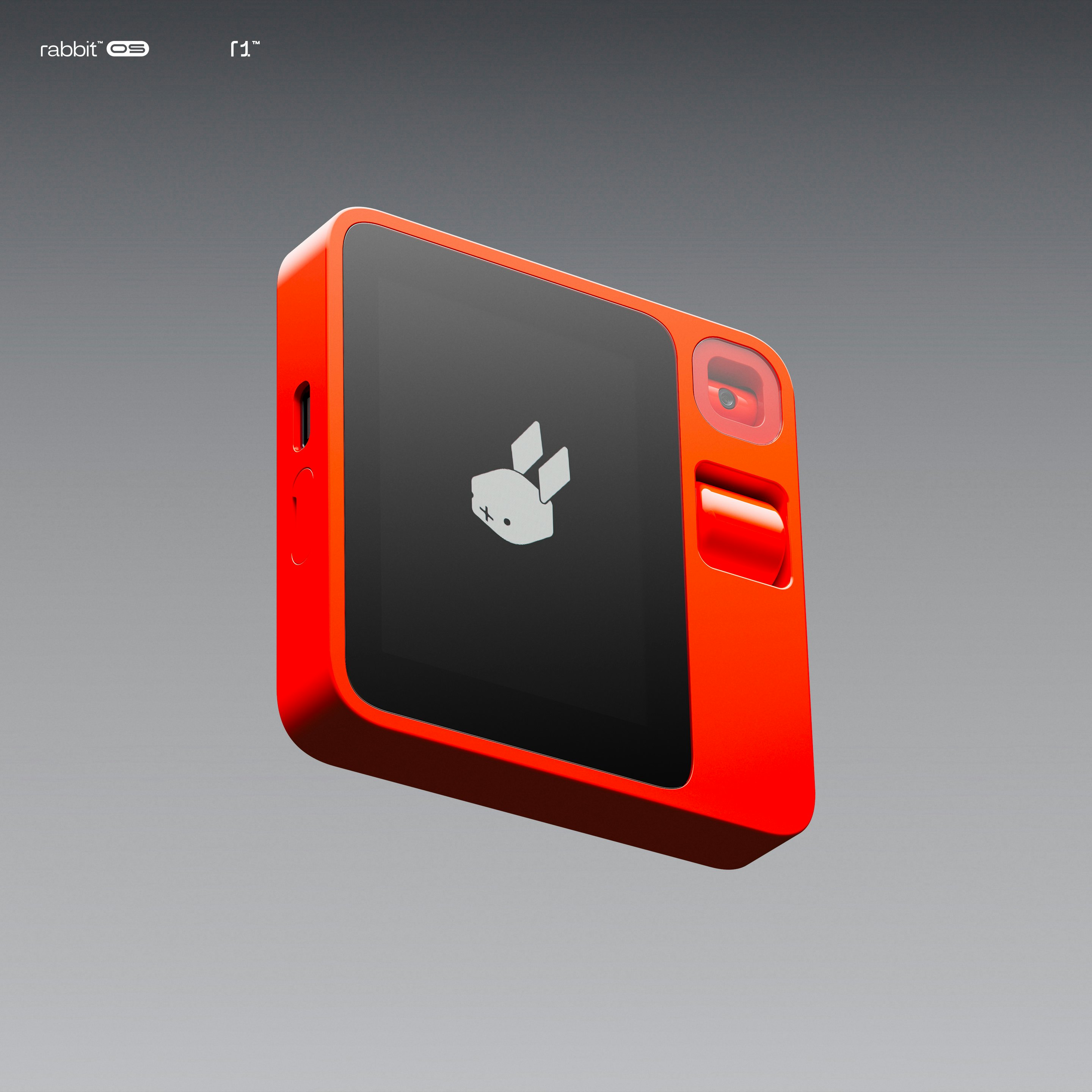
CES 2024 is many things. It’s a place to see big transparent and folding TVs, cute home robots that keep our sci-fi dreams alive, wild EV concepts, and apparently this real-life Pokédex device.
Rabbit’s R1 is part of a new wave of pocket-sized AI-powered gadgets that seek to wean us off addictive apps. Similar to Humane’s Ai Pin, the R1 relies on an AI voice assistant to deliver information on the fly. Instead of opening an app on your phone and tapping your way to getting something done, the idea is to simply push a button on the side of the R1 and tell the AI to do a task for you.
Want to book an Uber ride? Order a 12-inch pizza? Or maybe you just need to settle an argument that you’re having with a friend at a bar... The R1 can do all of those things for you — and really fast — according to Rabbit founder and CEO Jesse Lyu.
And just like the fictional Pokédex that Ash Ketchum uses to identify Pokémon, you can point the R1 at things and its 360-degree “rotational eye” camera can tell you information about what it “sees.”
The R1 is also designed by Teenage Engineering — the cool kids who helped make synthesizers less nerdy, brought transparent design back to consumer tech with devices like the Nothing Ear 2 wireless earbuds, and created the quirky Playdate handheld for Panic.
Rabbit R1 Versus Humane Ai Pin
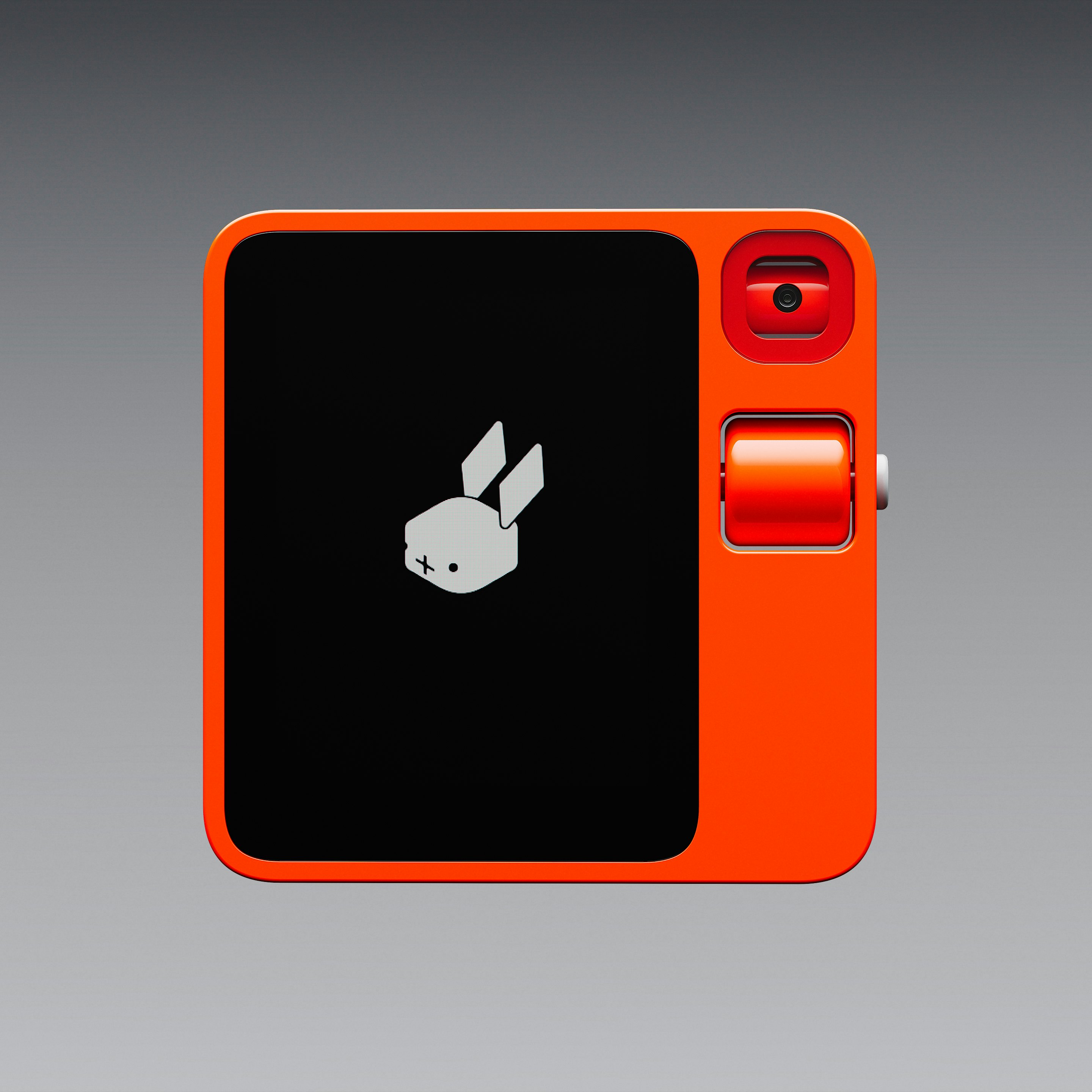
Let’s be clear about one thing: The R1 is not a phone replacement. Despite having a built-in SIM card, Lyu makes it clear in his keynote that the R1 is more of a companion to your phone. Unlike the Ai Pin, which requires its own cell connection and a $30 data plan, the R1 doesn’t need either; the R1 works over Wi-Fi, or you can tether it to your phone via a hotspot.
“We’ve come to a point where we have hundreds of apps on our smartphones with complicated UX designs that don’t talk to each other,” Lyu said in a press release. “As a result, end users are frustrated with their devices and are often getting lost. Rabbit is now building towards an intuitive app-free experience with the power of AI.”
Rabbit says its “Large Action Model” (LAM) is what makes the R1 different from other AI-powered devices. Whereas competing devices rely on ChatGPT and the large language models (LLMs) that it’s been trained on for generating text, audio, and images, with LAM, Lyu says the R1 can go a step further and generate actions “to help us get things done” and that the device’s rabbit OS is already trained to work with “the most popular apps.” Those actions are called “rabbits” and users will be able to create their own specific ones in the near future.
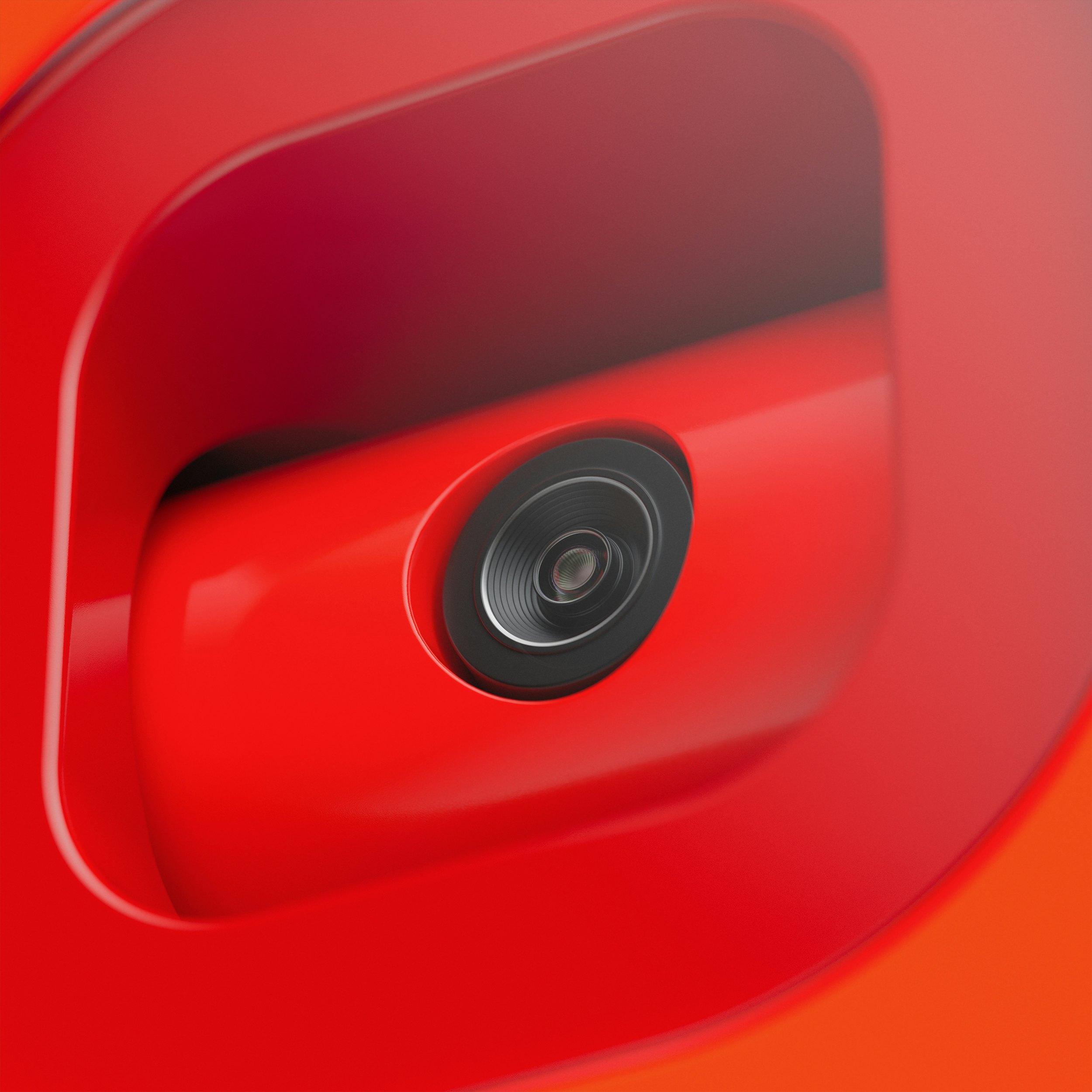

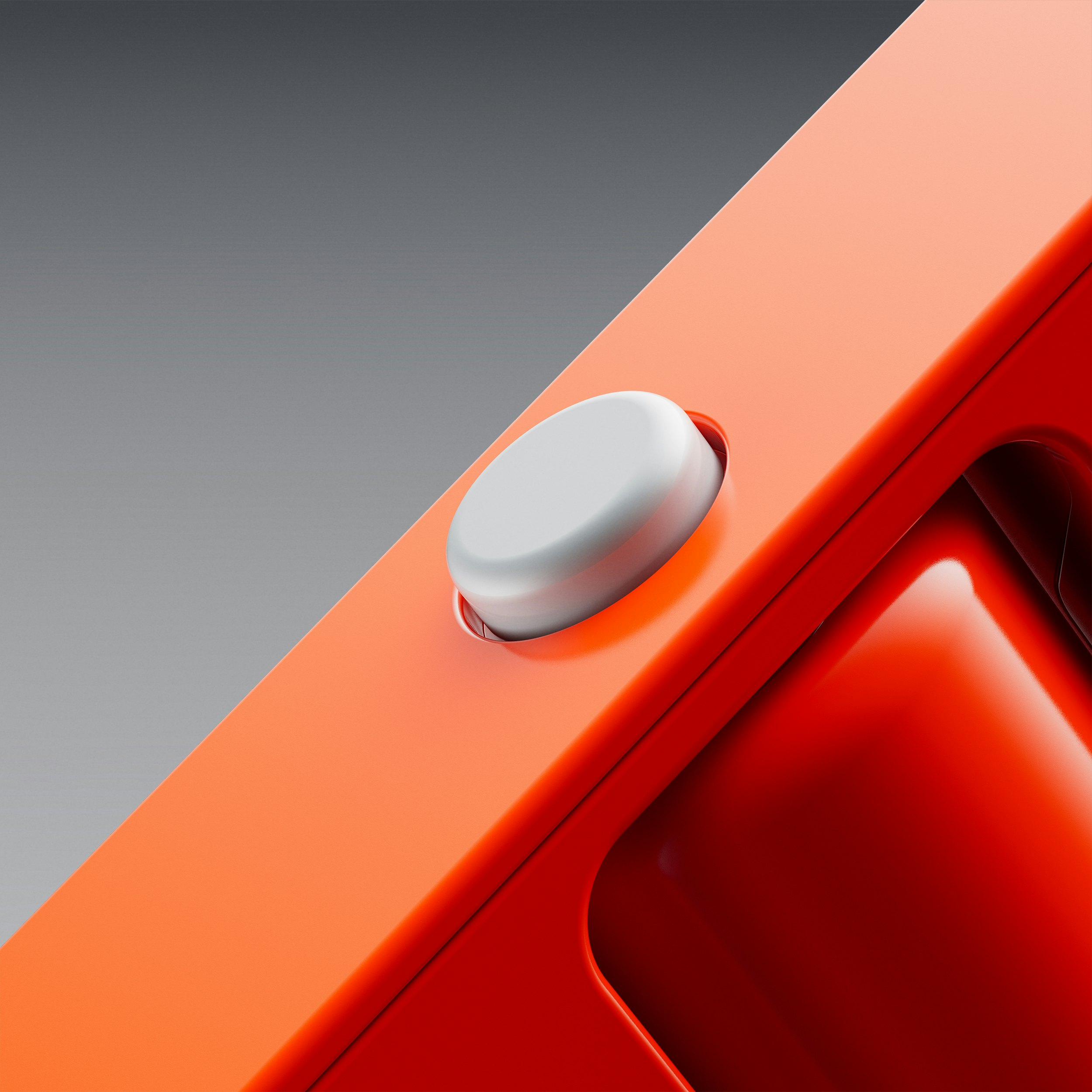
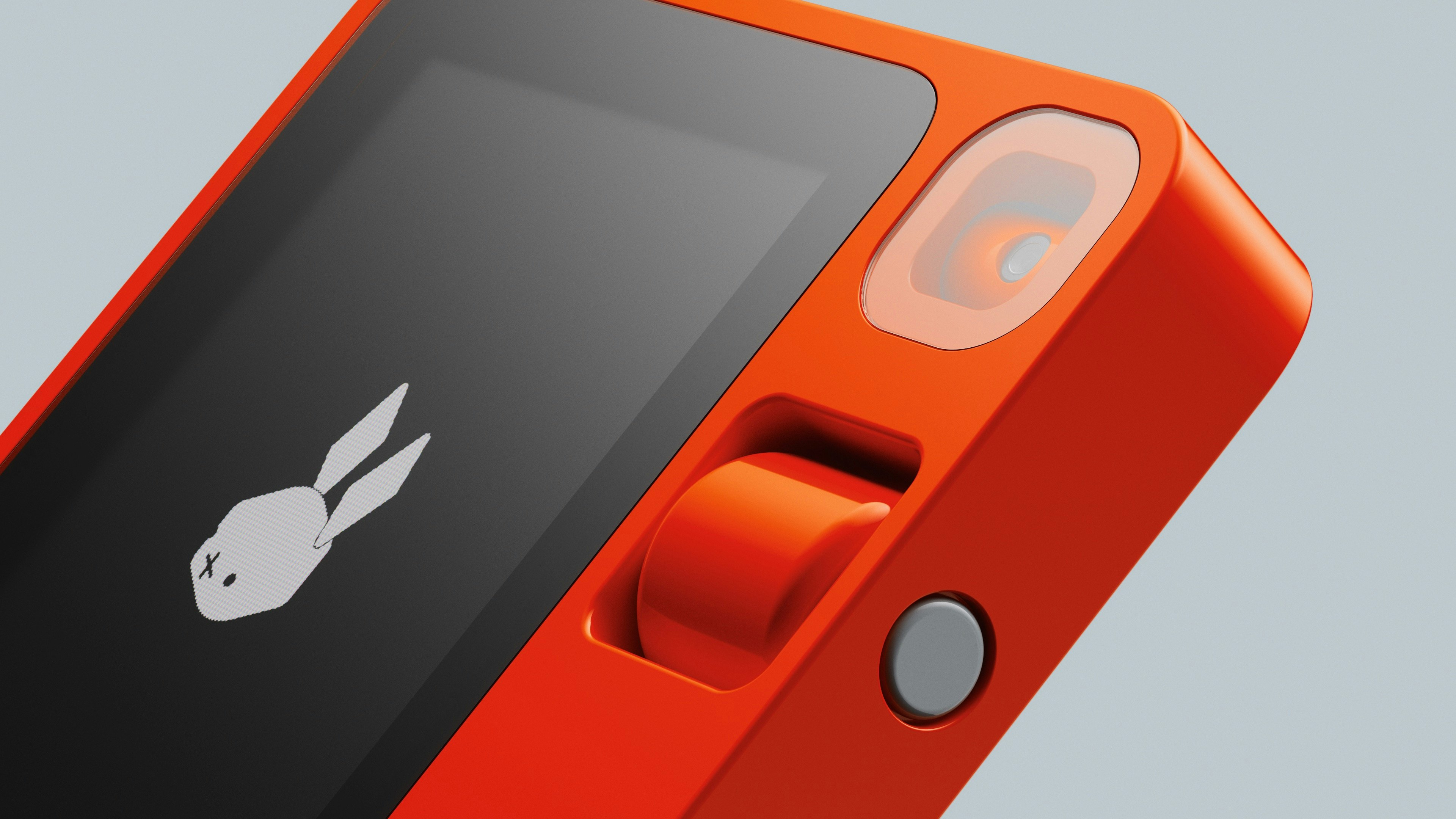
Naturally, everyone is comparing the R1 to the Ai Pin. They’re both AI-powered devices striving to shift away from apps. But there are some key differences between the two.
First, the R1 is not designed to be worn; the AI Pin is. Second, the R1 has a 2.88-inch touchscreen. This is the most notable difference and one that I think is really important. On the Ai Pin, there is no way to confirm anything that the AI assistant tells you. In one demo, Humane chairman Imran Chaudhri asked his Ai Pin to buy a book online. Where did the AI order the book from? Were there other places that sold it for less? You kind of blindly trust the AI to do something for you. At least with the R1’s screen, you can get a little bit more info, which means you’re not handing all of the keys to the AI. Furthermore, Rabbit says the screen and camera can be used for video calls.
On the Ai Pin, there’s only one button: the whole face of the device. You tap it and start talking to the AI. The R1 has a push-to-talk button and a scroll wheel for “navigating through helpful ‘cards’ to interact with different activities assisted by LAM.”
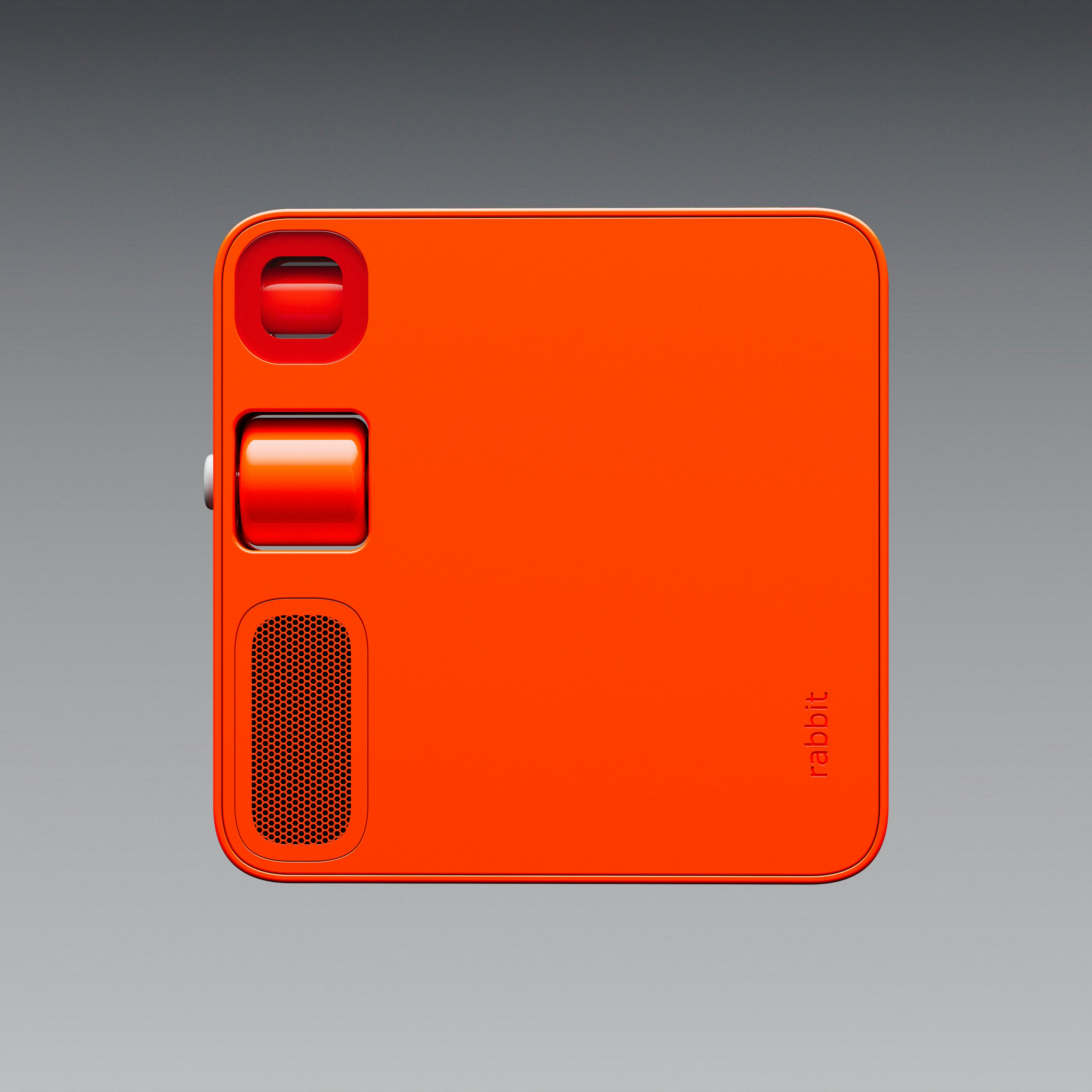
Specs-wise, it’s hard to say which one is more powerful, though Lyu implies in his keynote that the R1’s AI is significantly faster at returning answers than the Ai Pin. About the size of a stack of Post-it notes and weighing 115 grams, the R1 does have the Ai Pin beat on storage with 128GB versus 32GB. Rabbit lists other specs: a 2.3Ghz MediaTek Helio P35 processor, 4GB of RAM, a USB-C port, and an unlocked SIM card slot. As for battery life, Rabbit only says the R1 will last all day; the Ai Pin gets four hours on a charge and up to nine hours with the included battery booster.
Costs Less Than the Ai Pin
The most surprising thing about the Ai Pin might be how much less it costs compared to the Ai Pin. Humane offers the Ai Pin starting at $699 and Rabbit is selling the R1 for $199.
Both devices are launching in March. Rabbit says pre-ordered units will ship to U.S. customers between March and April. Pre-orders for non-U.S. addresses will have to wait until “later in 2024.”
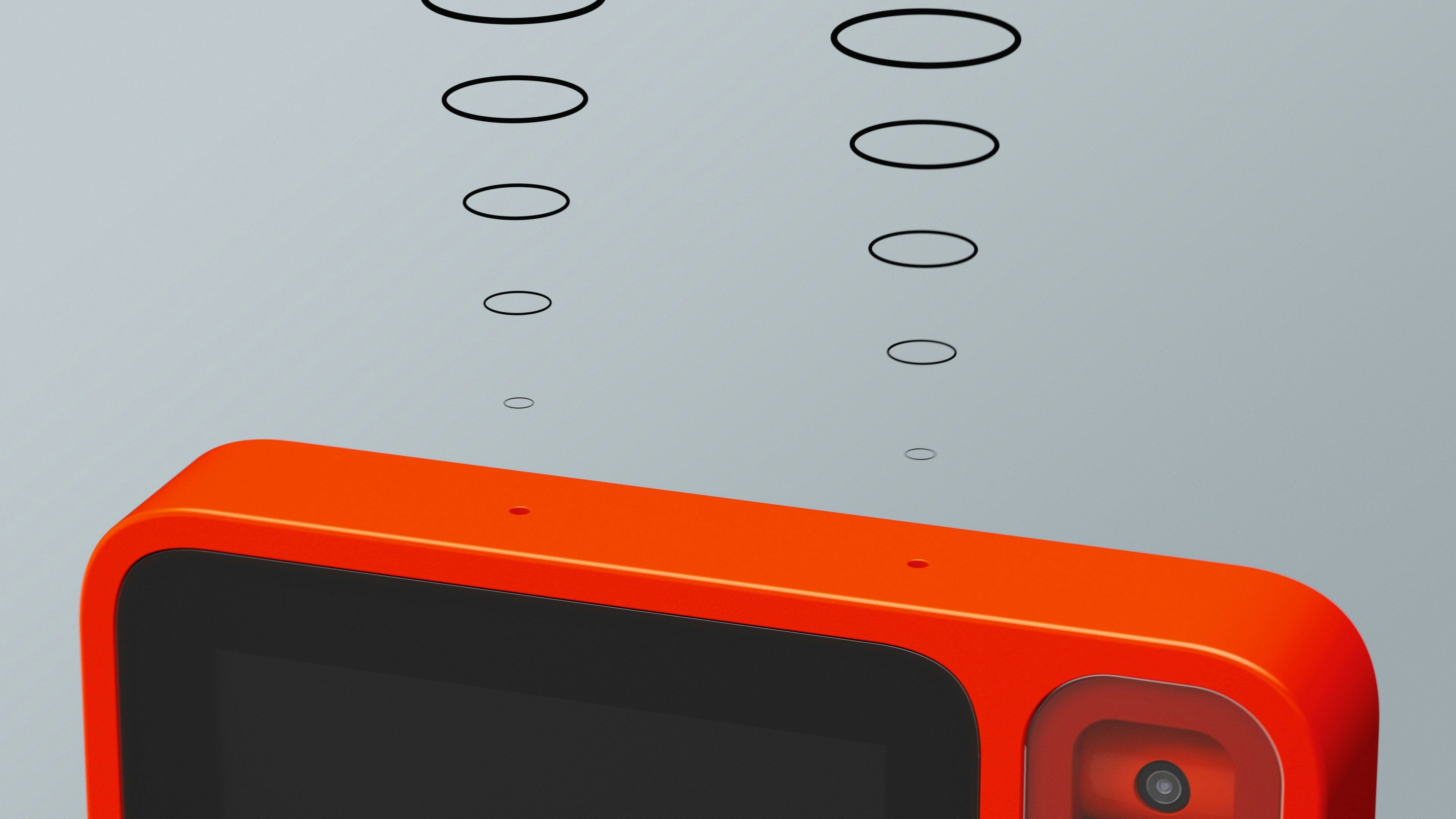
Honestly, I am liking what the R1 is promising. The device looks sleek; the utility seems to be there; the price is affordable compared to the Ai Pin. On the other hand, I understand the skepticism. Why not just use your phone to do the things the R1 does? Or wait for AI to inject phones with generative intelligence like Google is doing with the Pixel 8 and Samsung is expected to do with the Galaxy S24 series? I agree! Look, phones aren’t going away anytime soon, but where’s the fun in just using your touchscreen slab? Standalone devices that do one thing or a few things really well — and usually better than multitool devices — used to be a thing, and we really enjoyed them. It’s one. reason why the Game Boy is so popular again.
The R1 is bringing that fun back to consumer tech. There’s nothing wrong with having a separate gadget focused on AI. In fact, expect to see more of them come out this year. It’s also going to be really fun to bring the R1 out and point it at things just like a Pokédex.
INVERSE brings you everything from the fun and futuristic world of consumer technology at CES 2024. For all the latest technology coverage from the show, go to the INVERSE CES 2024 hub.







